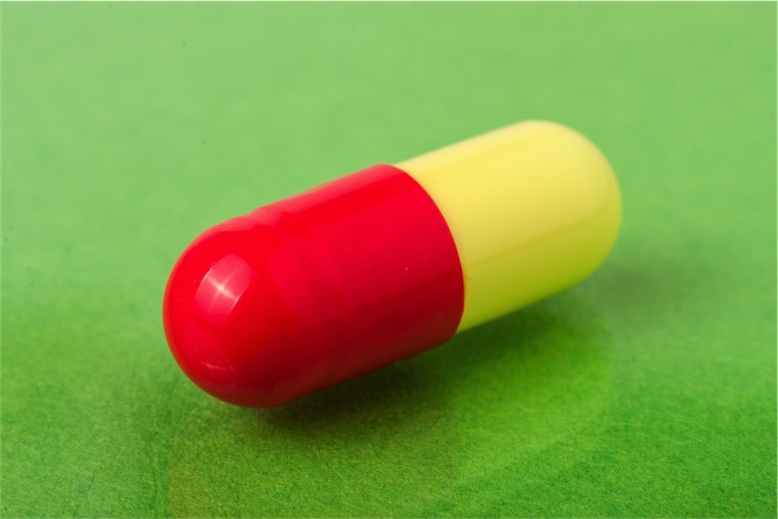How to support your gut to recover from antibiotics
Antibiotics have been one of the most valuable modern medicines since their discovery by Alexander Flemming in the early 20th Century. However, their many benefits come with a price. Overprescribing has increased bacterial resistance, and many antibiotics are becoming ineffective. This is because antibiotics are indiscriminate killing machines and will destroy both the bad and the good. Increasingly, we are learning that the “good” microbiome is essential to our health.
Most doctors are now more judicious about prescribing antibiotics, and the wider population is more informed about their risks and side effects. However, there are times when taking them is the best option for your health and recovery.
Why you should care about your microbiome
Healthy gut flora is vital for nutrient supply, producing vitamins and protecting the body from pathogens. An imbalance in your gut microbes is implicated in obesity 1. One of the reasons agriculture uses antibiotics is to help animals gain weight quickly. Research also supports their role in mental health by producing neurotransmitters 2. As you can see, our good bugs are working pretty hard for us!
Some research has suggested that it can take between 4 and 12 months to restore intestinal flora, depending on the type of antibiotic and the duration of the prescription 3.
Can you do anything to ensure you get optimal results from your antibiotic? How can you help protect and restore your gut microbiome?
While taking antibiotics
Vitamin C and D
Vitamin C and D, as immune-supporting nutrients, have been shown to enhance the effectiveness of antibiotics and reduce recovery time 4.
Saccharomyces cerevisiae boulardii
As noted earlier, antibiotics kill off the good with the bad, often resulting in an overgrowth of the less desirable strains, such as Staphylococcus spp., Escherichia coli, and Clostridium difficile. These are frequently the culprits of antibiotic-associated diarrhoea. Saccharomyces boulardii (SB) is a probiotic yeast resistant to antibiotics. This means you can take it at the same time as antibiotics. SB inhibits the growth of pathogenic strains and improves your intestinal cells’ ability to fight the infection 5. Various studies have shown considerable benefits for SB in reducing antibiotic-associated diarrhoea6.
Lactobacillus rhamnosus GG
Lactobacillus rhamnosus GG (LGG) has effectively prevented antibiotic-associated diarrhea (AAD) in children and adults. When co-administered with antibiotics, LGG can help reduce the risk of AAD from 22.4% to 12.3%.
LGG works through several mechanisms to prevent dysbiosis and restore normal bacterial flora during antibiotic treatment, including
- Competitive exclusion of pathogens
- Modulation of the immune system
- Production of lactic acid, which outcompetes less acid-tolerant bacteria
Take LGG with meals AND 2 hours away from antibiotics.
Partially Hydrolyzed Guar Gum (PHGG)
Partially hydrolyzed guar gum (PHGG) is a water-soluble dietary fiber derived from guar beans. PHGG acts as a prebiotic, promoting the growth of beneficial bacteria like Bifidobacteria and Lactobacilli, while suppressing harmful mucolytic bacteria that degrade gut barrier function.
Take 5-6 grams per day, 2 hours away from antibiotics, either with or without food.
After your course of antibiotics
Now that we know how important the microbiome is to our health, we need to restore it. This involves two key things: probiotics and prebiotics.
Food-based probiotics to seed
Consuming fermented foods such as natural yoghurt, kefir, kombucha, sauerkraut, kimchi, miso, tempeh will also support the return of a healthy microbiome.
Food-based Prebiotics to feed
Prebiotics are a non-digestible fibre that ferments in the small intestine. Prebiotics are essential for post-antibiotic recovery and beyond. While probiotics seed the good bacteria, prebiotics feed the healthy microbes, so you don’t need to keep taking probiotics 7. Dietary fibres classified as having high prebiotic effects includes inulin, fructo-oligosaccharides and galacto-oligosaccharides. The good news is that these are available in Foods 8. Make prebiotic foods a regular part of your diet to maintain healthy bacteria. Supplements are also available if you find it challenging to get enough of these foods in your diet.
| Vegetables | Jerusalem artichoke, chicory, garlic, onion, leek, shallots, spring onion, asparagus, beetroot, fennel bulb, snow peas, savoy cabbage |
| Legumes | Chickpeas, lentils, red kidney beans |
| Fruit | Custard apples, nectarines, white peaches, tamarillo, watermelon, grapefruit, pomegranate, dried fruit (dates and figs) |
| Grains | Barley, cous cous, wheat bran, oats |
| Nuts & Seeds | Cashews, pistachio nuts |
Other nutrients to support this phase
You can also continue with your B, C & D vitamins.
How long for?
I recommend that your antibiotic recovery plan run for about 8-12 weeks after you complete your course of antibiotics. This will allow you to get your good gut bugs back into balance.
Summary of the antibiotic gut recovery plan
** Doses are for adults
** The plan is only suitable for otherwise healthy people. If you have a medical condition, are taking medication or are pregnant or breastfeeding, please seek advice from a qualified practitioner.
| Supplement | Start taking | Stop taking | Dose and notes |
| Lactobacillus rhamnosus GG | With antibiotics | 6 weeks post-antibiotics |
1 twice a day, with meals **2 hours away from antibiotics |
| Saccharomyces boulardii | With antibiotics | 6 weeks post-antibiotics |
1 twice a day, either with or without food ** Can be taken with antibiotics |
| Partially hydrolysed guar gum (PHGG) | With antibiotics | Continue for 12 weeks | 5-6g /day can be taken with or without food |
If you enjoyed this, you might also like:
Three natural supplements to fortify your immune system this Winter
References:
- Langdon A, Crook N, Dantas G. The effects of antibiotics on the microbiome throughout development and alternative approaches for therapeutic modulation. Genome Med. 2016;8(1):39. doi:10.1186/s13073-016-0294-z.
- De Palma G, Collins SM, Bercik P. The microbiota-gut-brain axis in functional gastrointestinal disorders. Gut Microbes. 2014;5(3):419-429. doi:10.4161/gmic.29417.
- Zaura E, Brandt BW, Joost M, et al. Same Exposure but Two Radically Different Responses to Antibiotics : Resilience of the Salivary Microbiome versus Long-Term Microbial. Am Soc Microbiol. 2015;6(6):1-11. doi:10.1128/mBio.01693-15.Editor.
- Zojaji H, Talaie R, Mirsattari D, et al. The efficacy of Helicobacter pylori eradication regimen with and without vitamin C supplementation. Dig Liver Dis. 2009;41(9):644-647. doi:10.1016/j.dld.2008.09.008.
- Htwe K, Khin SY, Tin M, Vandenplas Y. Effect of Saccharomyces boulardii in the treatment of acute watery diarrhea in Myanmar children: A randomized controlled study. Am J Trop Med Hyg. 2008;78(2):214-216.
- Szajewska H, Mrukowicz J. Meta-analysis: Non-pathogenic yeast Saccharomyces boulardii in the prevention of antibiotic-associated diarrhoea. Aliment Pharmacol Ther. 2005;22(5):365-372. doi:10.1111/j.1365-2036.2005.02624.x.
- Vyas U, Ranganathan N. Probiotics, prebiotics, and synbiotics: gut and beyond. Gastroenterol Res Pract. 2012;2012(872716):1-17. doi:10.1155/2012/872716.
- Kolida S, Tuohy K, Gibson GR. Prebiotic effects of inulin and oligofructose. Br J Nutr. 2002;87(S2):S193-S197. doi:10.1079/BJNBJN/2002537.

Need help with your gut health?
Norelle Hentschel is an experienced Naturopath with a clinic in Stones Corner, Brisbane who enjoys supporting her clients to reach their health goals.
Want more articles like this?
Receive a monthly digest of natural health information to help you become “health” sufficient!
PS. Your inbox real estate is precious, and we will never annoy you with sales pitches or share your details with anyone else. One email a month — that’s it.

